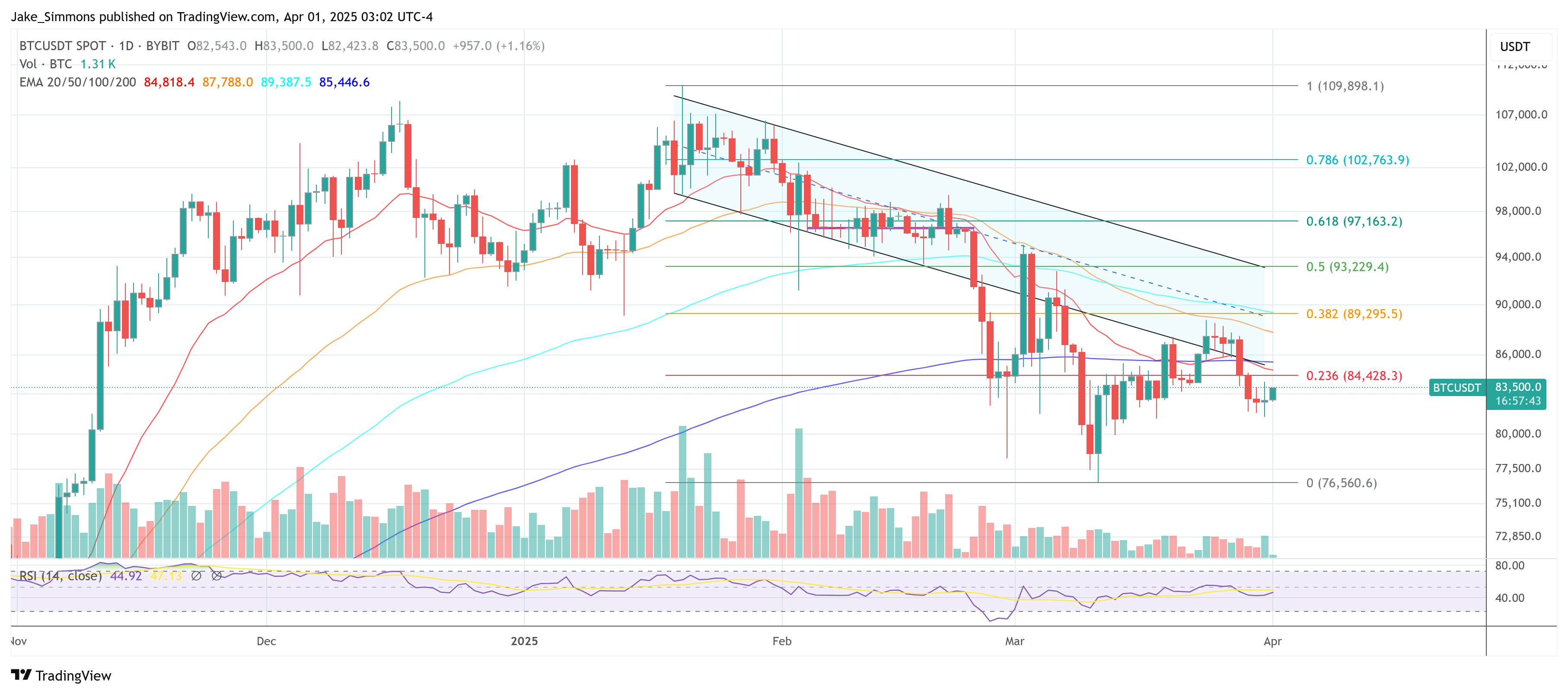Cause to belief

Strict editorial coverage that focuses on accuracy, relevance, and impartiality
Created by trade consultants and meticulously reviewed
The very best requirements in reporting and publishing
Strict editorial coverage that focuses on accuracy, relevance, and impartiality
Morbi pretium leo et nisl aliquam mollis. Quisque arcu lorem, ultricies quis pellentesque nec, ullamcorper eu odio.
In a brand new essay revealed on March 31, former BitMEX CEO Arthur Hayes lays out a case for a $250,000 Bitcoin value goal by year-end, grounded in his perception that the US Federal Reserve has successfully capitulated to fiscal dominance and resumed de facto quantitative easing (QE) for US Treasury markets.
The essay, laced with vivid satire and underpinned by rigorous macroeconomic evaluation, argues that the Fed’s latest shift in coverage alerts a structural return to fiat liquidity growth—an atmosphere traditionally helpful to Bitcoin and different arduous property. “Powell proved final week that fiscal dominance is alive and effectively,” Hayes wrote. “Due to this fact, I’m assured QT, no less than concerning treasuries, will cease within the brief to medium time period… Bitcoin will scream greater as soon as that is formally introduced.”
QE Returns, Fiat Dies, Bitcoin Flies
Hayes facilities his argument on the Federal Reserve’s March FOMC assembly, throughout which Chair Jerome Powell urged that stability sheet discount—or Quantitative Tightening (QT)—would sluggish significantly. Powell said: “We strongly need the MBS [mortgage-backed securities] to roll off our stability sheet in some unspecified time in the future. We’d look intently at letting the MBS roll off however hold the general stability sheet dimension fixed.”
Associated Studying
This coverage configuration, dubbed “QT Twist” by Hayes, implies that the Fed will reinvest MBS runoff proceeds into US Treasuries, thereby supporting bond costs whereas holding the nominal stability sheet regular. Hayes characterizes this as “treasury QE,” even when not labeled as such.
“If the Fed stability sheet is saved fixed, then they’ll purchase: Max $35 billion per 30 days of treasuries or annualized $420 billion,” Hayes calculated. As well as, the tapering of Treasury QT from $25 billion to $5 billion per 30 days represents an annualized $240 billion optimistic shift in greenback liquidity.
To border the Fed’s political constraints, Hayes invoked a satirical dialogue through which Powell is subjected to humiliation by Treasury Secretary Scott Bessent—a fictionalized dramatization that underscores the subordination of financial coverage to fiscal necessity. On this theatrical allegory, Powell is advised by Bessent: “Subsequent week on the FOMC, you’ll begin tapering QT for my treasury bonds and announce that QE for treasury bonds will begin within the close to future. Do you perceive?”
Hayes reinforces his level by drawing historic parallels to Arthur Burns, Fed Chair in the course of the inflationary Seventies, who admitted in his 1979 speech “The Anguish of Central Banking” that political stress rendered the Fed powerless to cease inflation.
Burns wrote: “The Federal Reserve was itself caught up within the philosophic and political currents that have been reworking American life and tradition… Financial coverage got here to be ruled by the precept of under-nourishing the inflationary course of whereas nonetheless accommodating a very good a part of the pressures within the market.”
Associated Studying
Hayes sees the identical dynamic right now, intensified by the federal government’s ballooning debt burden and the necessity to finance deficits at low yields.
Trump’s Coverage Agenda
Hayes ties the Fed’s pivot to the political realities of a second Trump administration, notably its industrial coverage targets. Trump has pledged to scale back the US fiscal deficit from 7% to three% of GDP by 2028, whereas reshoring manufacturing, sustaining navy spending, and avoiding cuts to entitlements.
Nevertheless, Hayes argues that these targets are mathematically incompatible with out central financial institution help, given the size of debt issuance required. “The maths don’t add up except Bessent can discover a purchaser of treasuries at an uneconomically excessive value or low yield. Solely US business banks and the Fed have the firepower to purchase the debt at a degree the federal government can afford.”
To unlock that capability, Hayes anticipates the Fed won’t solely halt QT but additionally exempt banks from the Supplementary Leverage Ratio (SLR)—a key regulatory constraint limiting financial institution purchases of U.S. Treasuries.
Bessent himself hinted at such a transfer on the All-In Podcast, stating: “If we take [SLR] away… we’d truly pull treasury invoice yields down by 30 to 70 foundation factors. Each foundation level is a billion {dollars} a 12 months.”
Hayes maintains that Bitcoin is uniquely positioned to learn from this shift in financial regime. Not like equities, that are entangled within the authorized and political structure of the state, Bitcoin is a bearer instrument native to the digital realm, with no counterparty danger.
“Bitcoin trades solely primarily based in the marketplace expectation for the longer term provide of fiat,” he wrote. “If my evaluation… is appropriate, then Bitcoin hit a local low of $76,500 final month, and now we start the ascent to $250,000 by year-end.”
Referencing gold’s response to QE1 in 2008–2009, Hayes highlights how liquidity injections can result in delayed however explosive repricing of anti-fiat property. In his view, Bitcoin is now taking part in the identical function gold as soon as did—solely quicker and with extra direct international publicity.
Hayes additionally provided perception into Maelstrom’s capital deployment strategy. “We use no leverage, and we purchase in small clips relative to the dimensions of our complete portfolio,” he stated. “We have now been shopping for Bitcoin and shitcoins in any respect ranges between $90,000 to $76,500.”
At press time, BTC traded at $83,500.

Featured picture from YouTube, chart from TradingView.com






